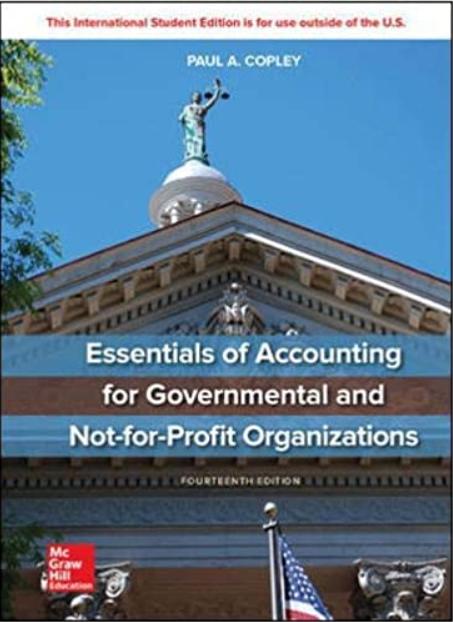Question
The budget for the year 2020 was prepared in December 2019 and had the following components: Revenue: The revenue is calculated as number of hours
The budget for the year 2020 was prepared in December 2019 and had the following components:
Revenue:
The revenue is calculated as number of hours which the crew works on a site, times the contracted rate with the client. The hours worked in the residential and commercial segments are shown separately, and there is total for the combined hours worked.
The revenue for each segment is arrived at by multiplying the hours for the segment times the rate.
The budget is prepared for four quarters, one to four. For the first quarter of 2020, the budgeted sales hours and hourly revenue were:
Item
Budgeted sales (commercial), in hours 2 500
Budgeted sales (residential), in hours 1 500
Budgeted selling rate (commercial), per hour $ 40
Budgeted selling rate (residential), per hour $ 50
For quarters two, three and four it was projected that:
• Budgeted sales in hours for both commercial and residential with increase at the rate of 7% on a quarter over quarter basis.
• Budgeted selling rate will increase at 3% on a quarter over quarter basis for the commercial segment and 5% on a quarter over quarter basis for the residential segment.
Direct Labour expense:
Super Clean will pay its employees an hourly rate of $ 19 for the entire year.
Cleaning supply usage:
The budgeted usage is 0.22 litre / labour hour for commercial segment and 0.13 litre/ labour hour for residential segment. This is constant for the entire year.
Cleaning supply expense:
Budgeted expense is $5.60 per liter for the entire year.
Fixed overhead:
In order to support the cleaning operations, there are four items of expenditure. These are designated as overheads and their budgeted expenses are as follows:
Receptionist:
Budgeted expense is $ 5 800 per quarter and is the same for all the four quarters.
Depreciation:
This relates to the depreciation of vehicles used to transport employees to client locations. Budgeted expense is $ 9 400 per quarter and is the same for all the four quarters.
Gas:
Budgeted expenditure on gas is $ 6 500 and is the same for all the four quarters.
Office Supplies:
Budgeted expenditure on Office Supplies is $ 800 per quarter and is the same for all the four quarters.
Actual results for the year 2020.
It is now January 7, 2021 and Super Clean is comparing the actual expenses against their budget. Here is what they found.
Revenue:
For the first quarter of 2020, the actual sales hours and hourly revenue were:
Item
Actual sales (commercial), in hours 2 800
Actual sales (residential), in hours 1 300
Actual selling rate (commercial), per hour $ 43
Actual selling rate (residential), per hour $ 55
For quarters two, three and four it was noticed that:
MGMT 8500: BUDGET ASSIGNMENT – W21
Commercial:
• Actual sales recorded a 2% increase in Q2 over Q1. Q3 was 5% higher than Q2. Q4 was 3% higher than Q3.
Residential:
• Actual sales recorded a 2% increase in Q2 over Q1. Q3 was 5% higher than Q2. Q4 was 3% higher than Q3.
Direct Labour expense:
Super Clean paid its employees an hourly rate of $ 20 for the entire year.
Cleaning supply usage:
The actual usage was 0.2 litre / labour hour for commercial segment and 0.11 litre/ labour hour for residential segment. This is constant for the entire year.
Cleaning supply expense:
Actual expense was $5.25 per liter for the entire year.
Fixed overhead:
In order to support the cleaning operations, there are four items of expenditure. These are designated as overheads and their budgeted expenses are as follows:
Receptionist:
Actual expense was $ 6 100 per quarter and is the same for all the four quarters.
Depreciation:
This relates to the depreciation of vehicles used to transport employees to client locations. Actual expense was $ 9 200 per quarter and was the same for all the four quarters.
Gas:
Actual expenditure on gas was $ 7 000 and was the same for all the four quarters.
Office Supplies:
Actual expenditure on Office Supplies was $ 1 100 per quarter and was the same for all the four quarters.
Unproductive (unbilled) factor:
Cleaning crews had to work 11% over the revenue generating hours to attend to complaints and do a second cleaning. These hours were not billable to clients, but Super Clean would pay the
employees for this time they worked. For the purpose of this assignment, assume that there is no consumption of cleaning materials when this second cleaning was done.
Required:
Static budget
• Actual budget
• Flexible budget
• Static budget variance
• Flexible budget variance
• Variance analysis
Step by Step Solution
3.43 Rating (169 Votes )
There are 3 Steps involved in it
Step: 1
ANSWER Variance analysis Sales Volume variance Flexible budget S...
Get Instant Access to Expert-Tailored Solutions
See step-by-step solutions with expert insights and AI powered tools for academic success
Step: 2

Step: 3

Document Format ( 2 attachments)
63619ad682b98_235414.pdf
180 KBs PDF File
63619ad682b98_235414.docx
120 KBs Word File
Ace Your Homework with AI
Get the answers you need in no time with our AI-driven, step-by-step assistance
Get Started


